What Is To Be Done?
 In my previous post, I discussed the repetitive, predictable, monotonous structure of the most recent iteration of World Press Photo’s 2012 selection of the best in international photojournalism from the preceding year, currently in the Main Gallery of the Visitors’ Lobby at United Nations Headquarters in Manhattan on August 15. (Note: The show will run through September 9. Enter at 46th St. and First Avenue; you’ll need a picture ID. If you can’t make the show, and can’t afford the catalogue, you’ll find the winners online at the link above.)
In my previous post, I discussed the repetitive, predictable, monotonous structure of the most recent iteration of World Press Photo’s 2012 selection of the best in international photojournalism from the preceding year, currently in the Main Gallery of the Visitors’ Lobby at United Nations Headquarters in Manhattan on August 15. (Note: The show will run through September 9. Enter at 46th St. and First Avenue; you’ll need a picture ID. If you can’t make the show, and can’t afford the catalogue, you’ll find the winners online at the link above.)
I ended by suggesting that the absence of any serious, ongoing, cumulative public discourse about photojournalism as a sociopolitical project virtually ensures that it will remain static, both stylistically and structurally. How might we change that situation?
The production and distribution of informationally oriented imagery constitutes, first and foremost, a communicative act. It takes place in the public sphere, making it by definition political. As such, it merits — indeed demands — an ongoing public debate by the polity, exemplified by critics, as well as an informed public dialogue among the practitioners of the various aspects of this craft: photographers, picture editors, publishers.
There’s no real way for such a medium to advance — and no way for its audience to deepen its understanding — without the introspection and analysis and self-criticism that a literature of that discipline makes possible. For that to happen, the relevant materials — which today would include texts, of course, but also digital files of lectures, panels, and other discourse formats — have to get brought together where they can be easily found and reliably referenced. Yet you cannot today go to any website that specifically gathers materials pertinent to these issues. You cannot even purchase an anthology, printed or in ebook form, that gathers diverse commentaries on this subject.
There’s also a need for forums in which these issues get addressed in ongoing debate. That’s how the received ideas circulating among a form’s practitioners get challenged by others in the field, as well as by observers from outside. I’m not speaking here of the casual, frivolous, and typically uninformed chatter that bloats most general-admission online forums, but of sites for focused exchange where professionals in the field enunciate and defend their positions among each other and invited commentators from other areas of expertise.
No organization has positioned itself better than WPP to serve those purposes and become a locus for international dialogue over the complex issues involved in the creation and dissemination of informationally oriented imagery. Regrettably, WPP doesn’t even put online the valuable materials it generates itself — its keynote addresses and panel discussions, which it dutifully records only to hide them from the world, instead of enriching its website with them. Nor do they transcribe those presentations and make the texts available. What happens in Amsterdam stays in Amsterdam.
And they don’t use their website as a forum, though that’s a logical extension of the WPP project.
What a shame. What a waste.
World Press Photo: The Next Phase?
For the 2012 issue of the journal European Photography, editor and publisher Andreas MüIler-Pohle asked me to expand on the critique of WPP that I’d posted here last November. That short meditation, reprinted below in its entirety, appeared this spring under the title “World Press Photo: The Next Phase?”
•
“About the foundation: We exist to inspire understanding of the world through quality photojournalism.” — From the World Press Photo website
 World Press Photo’s 2012 motto is an even more vaporous version of Edward Steichen’s 1969 windy aphorism “The mission of photography is to explain man to man and each to himself.” Substitute just about anything for “photography” and “photojournalism” in these formulations — psychoanalysis, Marxism, The Big Lebowski, the Koran, Sesame Street — and its deliberately vague, one-size-fits-all character becomes apparent. Unimpeachable because meaningless.
World Press Photo’s 2012 motto is an even more vaporous version of Edward Steichen’s 1969 windy aphorism “The mission of photography is to explain man to man and each to himself.” Substitute just about anything for “photography” and “photojournalism” in these formulations — psychoanalysis, Marxism, The Big Lebowski, the Koran, Sesame Street — and its deliberately vague, one-size-fits-all character becomes apparent. Unimpeachable because meaningless.
The problem lies in the fact that all three territories signified by the words in this organization’s name — the “world,” the “press,” and “photo” — have undergone traumatic change since the organization’s founding in 1955. Nor have any of the three settled into some new, relatively fixed condition; independently and in their various combinations they remain in flux, threatening to maintain this state of permanent evolution indefinitely.
Unenviable, then, the situation of WPP’s directors, sponsors, and members. How do you stabilize and redefine an organization that has had the rug pulled out from under it and must stand henceforth on shaky ground? The stock agencies that once subsidized the press photography industry have died off. Picture editors and periodicals now crowdsource instead of sending staffers and freelancers to cover events. The internet effectively bypasses the traditional gatekeepers of what we called the “picture press.” How many of the recent stories that have gone viral, how many of the recent images that have become memes, came from the cameras of working professionals, and how many resulted from amateur serendipity? Think Neda in Iran and the pepper-spray cop in southern California.
I’m writing this sitting in a Starbucks on the southeast corner of 14th St. in Manhattan. It’s rush hour, 5:30, the weather cool but pleasant. In the past two hours I’ve seen an estimated 1000 people walk by carrying cameras. “Serious,” professional-quality cameras, a few of them. Consumer-end cameras, a few more. Primarily cellphones with cameras built in and wireless connections. Right now these urbanites are mostly talking and/or texting, opposable thumbs blazing on their teeny keyboards. But let something momentous happen — Lindsay Lohan stumble puking from the yuppie bar next door, a meteor crash into the building across the street that houses Sol Moscot Opticians (“Family owned and operated since 1915”) — and the documentation will hit YouTube and Flickr and the website of the Daily News faster than you can say Ron Galella.
Last year, around the time of the annual WPP awards in Amsterdam, I posted at my blog Photocritic International a critique I’d written 11 years earlier, solicited by WPP’s then-director. The critique still pertained, because the organization hasn’t changed. It sails on blithely, applying to the imagistic environment of the 21st century the assumptions of a world that no longer exists.
Add to this the fact that the combination of editorial standardization and the homogenizing that inevitably accompanies converting a craft into an academic discipline has eliminated and/or discouraged the development of anything much resembling individual style in press photography. Strip out the captions and picture credits in the past decades’ worth of WPP annual exhibition catalogues and I’d defy just about anyone to identify the photographers involved. Their makers aspire to generate memes, but mostly they crank out tropes.
 This is encouraged by their sponsors. They’re missing a bet. Take a cue from American Idol: acknowledge the grassroots visual intelligence that photography has generated. Give recognition to the collective witnesses at the University of California, Davis who made the pepper-spraying of nonviolent Occupy protesters an international news story. Applaud Emphas.is, Reportage, and Kickstarter for reconfiguring the support base for photojournalism.
This is encouraged by their sponsors. They’re missing a bet. Take a cue from American Idol: acknowledge the grassroots visual intelligence that photography has generated. Give recognition to the collective witnesses at the University of California, Davis who made the pepper-spraying of nonviolent Occupy protesters an international news story. Applaud Emphas.is, Reportage, and Kickstarter for reconfiguring the support base for photojournalism.
Time to rethink the whole WPP project from the ground up. If they ever get serious about catching up with where “press photography” has gone since 1955, WPP might want to scrap the entire process of Academy Awards-style categories and prizes, and become instead a serious forum for discussion of information-based, issue-oriented imagery in the new media environment. Some possible topics:
- electronic books as a replacement for print books;
- electronic periodicals as a replacement for print periodicals;
- the internet as a distribution system;
- print-on-demand (POD) self-publishing, crowdfunding, and subscription-based systems as alternative methods of financing photojournalistic projects;
- the transition from still photography to multimedia, and the presentational platforms for same;
- citizen journalism and crowdsourcing . . .
To wit, WPP could preside over the transformation of what were once the professional disciplines of photojournalism and press photography, whose specialist achievements it celebrated, into a much more vast if diffuse activity practiced by the citizenry at large. It could convert itself into a springboard, teaching citizen journalists how to conceptualize their activities and improve their output, and serve as a distribution center for their production. It could stop handing out gold stars and function as a synapse.
If we still need professional press photographers, it’s not to make images we can’t generate ourselves, but to serve as models of how to persist in making them, using them to investigate social situations, and editing and organizing them.
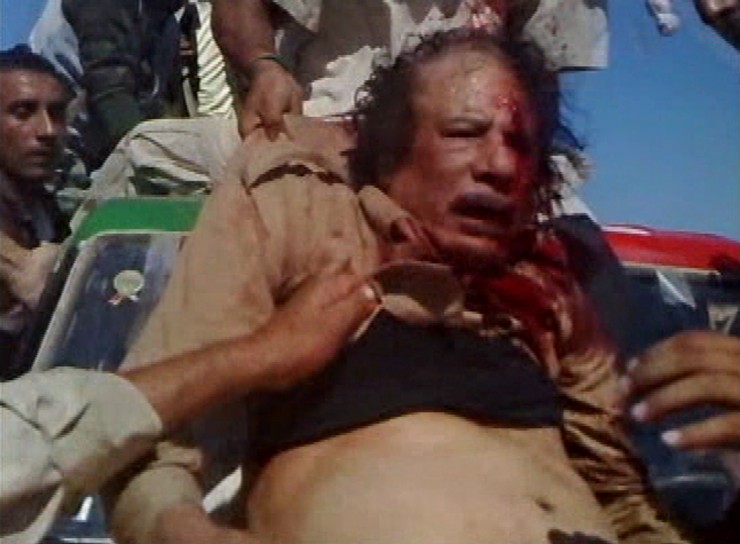 (Postscript, August 29, 2012: A single example of citizen journalism appears in this 2012 edition of the show — a still image from an anonymous video, posted on YouTube, of a Libyan National Transitional Council fighter pulling the captured and wounded Muammar Gaddafi onto a military vehicle. Awarded a Special Mention by this year’s WPP jury, the image’s caption reads, “The jury considers a visual document for a Special Mention when it has played an essential role in the news reporting of the year worldwide and could not have been made by a professional photographer.”)
(Postscript, August 29, 2012: A single example of citizen journalism appears in this 2012 edition of the show — a still image from an anonymous video, posted on YouTube, of a Libyan National Transitional Council fighter pulling the captured and wounded Muammar Gaddafi onto a military vehicle. Awarded a Special Mention by this year’s WPP jury, the image’s caption reads, “The jury considers a visual document for a Special Mention when it has played an essential role in the news reporting of the year worldwide and could not have been made by a professional photographer.”)
•
P.P.S. February 12, 2015: Apparently, Lars Boering, the new managing director at World Press Photo (he took over just last month), has read these posts of mine:
“I’d really like World Press Photo to become the think tank of the industry. And a think tank should invite everybody at the table to discuss – people from the photojournalism and journalism fields, but also people working in data research, visualization, etc. It should be a mix of traditional and innovative organizations. It’s where the change is coming from. We should keep moving and keep the debate going.” — Olivier Laurent, “World Press Photo to Become a Think Tank for Photography,” Time, February 3, 2015
Looks as if they plan to take up my challenge “[to] become … a serious forum for discussion of information-based, issue-oriented imagery in the new media environment.” Glad to hear it.
•
This post supported by a donation from the Estate of Lyle Bongé.


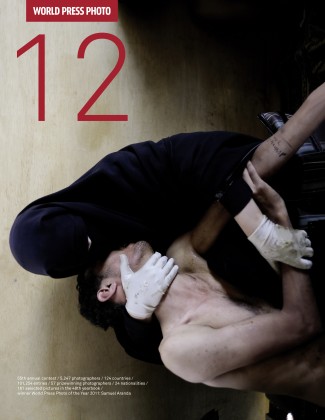
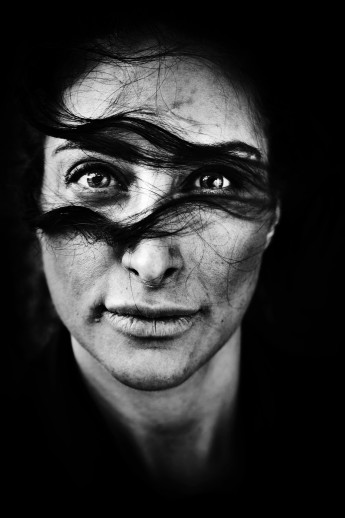
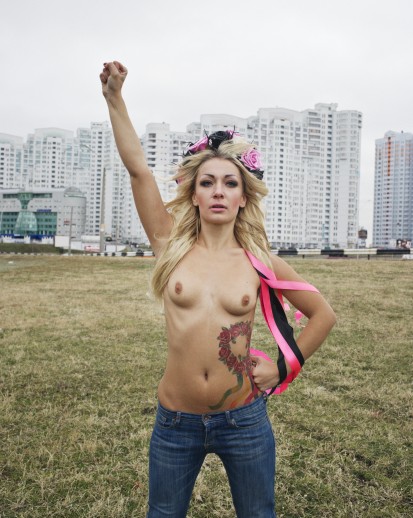
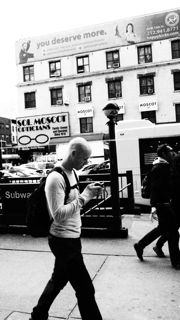
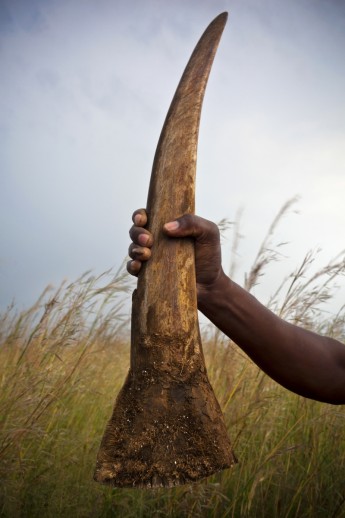




Leave a Comment